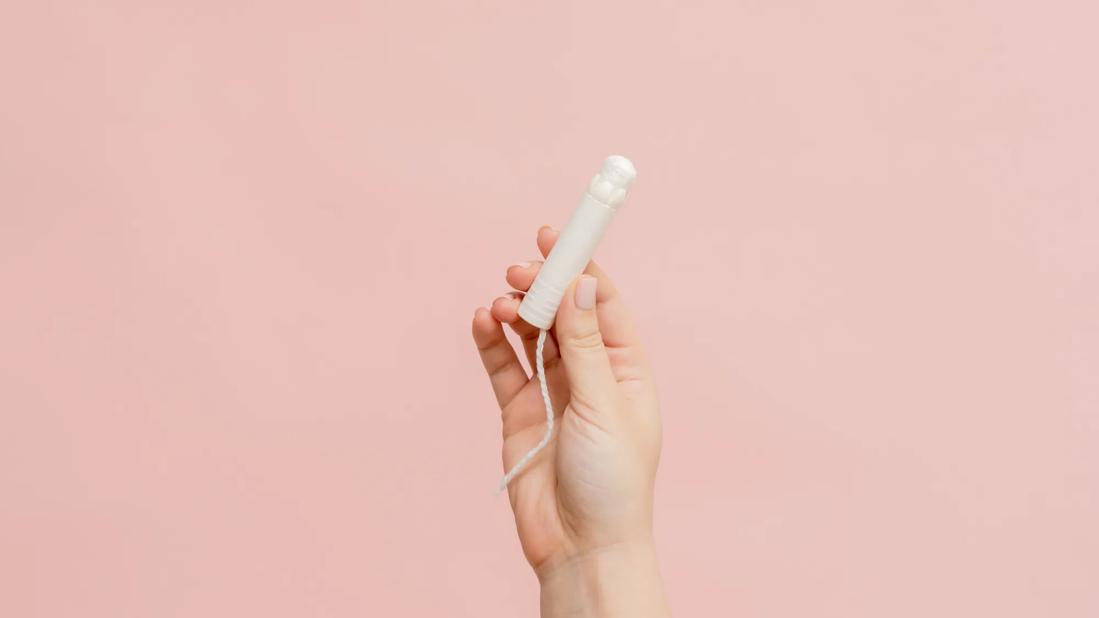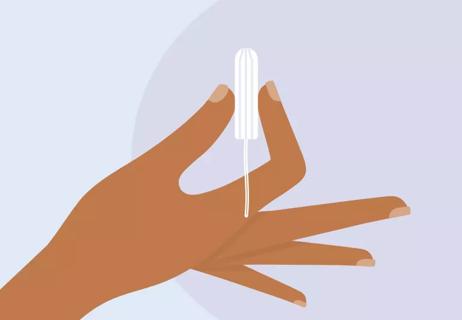Yes, you can pee with a tampon in; no, they won’t stretch out your vagina or make cramps worse!

Getting the truth about tampon use can be like a bad game of telephone: Everyone tells you something a little bit different, and the information seems to change as it gets passed down and repeated.
Advertisement
Cleveland Clinic is a non-profit academic medical center. Advertising on our site helps support our mission. We do not endorse non-Cleveland Clinic products or services. Policy
To get true, science-based answers, it’s best to hear from a healthcare professional. Women’s health specialist Sara Youngblood, CNP, answers your questions about tampons and clears up some common misconceptions.
There are plenty of reasons you may not be sure about tampons.
If tampons hurt, no one would use them! “Tampons should definitely not hurt, although you may feel a little bit of initial discomfort when you first put one in,” Youngblood says.
But once you insert a tampon properly, you shouldn’t be able to feel it. If it doesn’t feel right once it’s in you, a few things may be happening:
Advertisement
“Most people don’t feel any pain once a tampon is in place,” Youngblood reiterates.
False. Urine and menstrual blood come out of different holes, so you can definitely pee with a tampon in. Tampons go into your vaginal opening, while urine comes out of your urethra, a hollow tube that connects to your bladder.
Your urethra and vaginal opening are pretty close to one another, so the string of your tampon might get a little wet when you pee. You can take the opportunity to remove your tampon and put in a fresh one, or you can simply pat the string dry and leave it in.
“Getting a little bit of urine on the tampon string doesn’t increase your risk of infection or anything like that,” Youngblood reassures.
You can poop with a tampon in, but it might be a good time to change it.
For starters, the strain of pooping may cause the tampon to come out, whether partially or all the way.
“Sometimes, the force of pushing for a bowel movement can dislodge your tampon, just because the canals for stool and the vagina are pretty much on top of each other,” Youngblood explains.
You also risk cross-contamination from stool (poop).
“You also risk getting poop on the string, which can introduce bacteria, like E. coli, and lead to a urinary tract infection,” she warns.
If you want to leave your tampon in when you poop, it’s smart to tuck the tampon string into the folds of your labia to avoid getting any fecal matter on it.
This is false. Tampons won’t make you “loose” or change the shape of your vagina. Once you’ve removed a tampon, your vagina goes right back to its usual shape and size.
“The natural anatomy of the vagina is very stretchy,” Youngblood explains. “Think about it: A whole baby can come through it — and comparatively, a baby’s head and a tampon are vastly different in size!”
Sometimes true — but there’s more to it than that. This myth is actually related to another myth: that your hymen tears the first time you have sex. And actually, neither of these things is necessarily true.
Your hymen is a tissue membrane that covers part of your vaginal opening. It’s flexible and stretchy, but over time, it loses its elasticity due to everyday movement. That includes playing sports, having sex and, yes, using tampons.
Eventually, everyone’s hymen thins and tears. But except in cases of vaginal trauma, no singular action, like having sex or using a tampon, will definitively break your hymen.
“Using tampons won’t break your hymen,” Youngblood says. “But it’s natural for it to eventually tear, and it’s not something to be worried or concerned about.”
Advertisement
False. This view, which is maintained by some cultures and religious communities, is scientifically inaccurate. Tampons are used for period control only, and they’re not in any way related to your sexuality or your virginity.
“Using a tampon doesn’t take away your virginity,” Youngblood reassures. “Virginity is about whether you’ve had sex, not whether you’ve used a tampon.”
Some people swear that tampons worsen their menstrual cramps, but there’s no scientific evidence of this.
Cramps are caused by contractions in your uterus, and tampons never make it that far into your body. They remain in your vagina, which doesn’t play a role in menstrual cramping.
“Cramps happen when your body releases chemicals called prostaglandins, which trigger the muscles in your uterus to constrict,” Youngblood explains. “That’s when your uterus releases its lining and you have your period.” (Prostaglandins can also contribute to period poops and particularly smelly farts.)
If you use tampons correctly, the chances of getting toxic shock syndrome (TSS) — a rare but life-threatening condition — are very, very low.
Studies show that leaving the same tampon in for too long is the biggest risk factor for developing TSS. The condition was common through the 1980s, but tampon manufacturers have since made changes to their products that have lessened the likelihood of developing it. Now, TSS affects an estimated 1 in 100,000 people.
Advertisement
To avoid TSS, change your tampon regularly.
“We recommend putting in a fresh, new tampon every four to six hours, and definitely don’t leave the same one in for longer than eight hours,” Youngblood advises.
As long as you don’t leave your tampons in for longer than the recommended amount of time, they shouldn’t cause yeast infections or any other bacterial imbalances in your vagina.
Very, very false. You should never insert more than one tampon at a time.
Using two tampons raises your risk of toxic shock syndrome and makes it more likely that one of the tampons will get wedged up at the top of your vaginal canal. (Tampons can’t get lost in your body, but they can get lodged just out of your reach.)
“If you’re concerned about a heavy menstrual flow, switch to a higher-absorbency tampon,” Youngblood states. “And if you’re worried about saturating that, you may want to use a pad at the same time.”
For the most part, though, you shouldn’t be soaking through a super-plus tampon within an hour or two. If your periods are that heavy, make an appointment to speak with a gynecologist to discuss possibilities.
If you have a question about tampon use (or anything else body-related), don’t hesitate to ask your doctor or another healthcare provider. “We’re invested in educating and empowering you to better understand how to take care of yourself,” Youngblood encourages.
Advertisement
Learn more about our editorial process.
Advertisement

Nothing scented should go in or around your vagina!

It depends on your menstrual flow, and a little trial and error

Yes, with the right absorbency level and maximum time-frame

Homemade doesn't always mean safe

From using one at night to how often you should change them

Use them within five years and store them someplace cool and dry

In addition to toxic shock syndrome, you risk other vaginal infections

Key steps include picking the right level of absorbency and inserting it at the correct angle

Start having sex about 72 hours before ovulation, then at least every other day during your fertile window

Attachment theory suggests that your earliest relationships shape connections throughout your life

It isn’t a recognized mental health disorder, but research shows that problematic social media use can negatively affect your mental health, self-esteem and sleep